Business Blogging vs LinkedIn Articles: Which is Better?
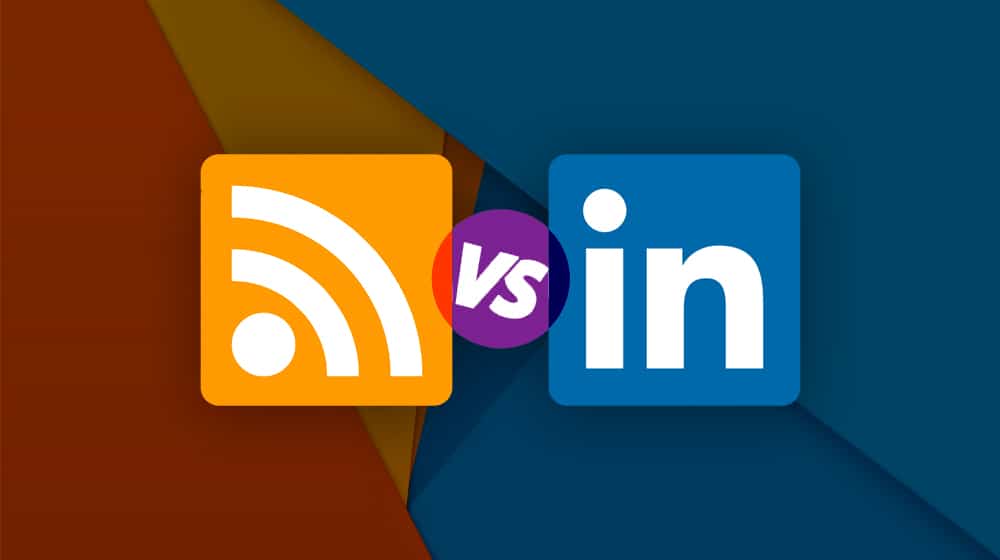
There are a lot of different ways you can write content for the web. You can run your own blog, of course. You can write for hub sites like HubPages. You can write for third party blog platforms like WordPress.com or Blogger. You can write for publications like Medium. You can even publish long-form blog content on platforms like Facebook (via Instant Articles) or on LinkedIn.
Today, I'm just going to compare two of these: blogging on your own business blog and posting on LinkedIn articles.
 30 Second Summary
30 Second Summary
You can publish content on both your business blog and LinkedIn to get the best results. Your business blog gives you full control over design, SEO benefits and detailed analytics with Google. You'll also have complete freedom with calls-to-action and conversion tools. When you post on LinkedIn, you can reach its 260 million monthly users and build authority with industry leaders. You should either syndicate your blog posts to LinkedIn after Google indexes them, or create unique content for each platform based on your time and goals.
Why LinkedIn?
Why would you want to blog on LinkedIn in the first place? It's not your domain, after all. It's tied to your business account or your personal account, sure, since it's a social network, but it's not going to get you the same kind of value you get out of a business blog.
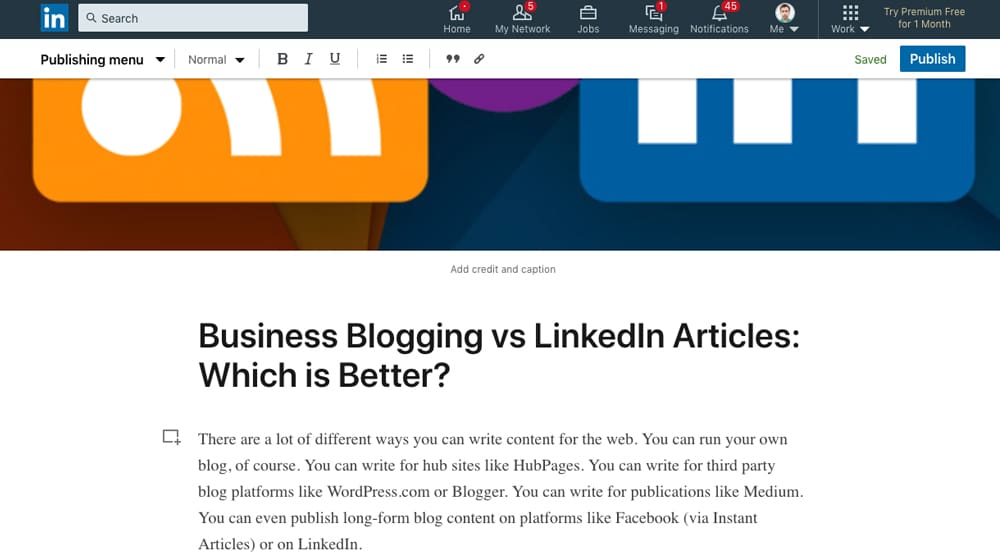
So what benefits are there to blogging on LinkedIn?
You can build authority and thought leadership on LinkedIn.
LinkedIn is well known as a social network for professionals, and a lot of the industry leaders will be posting, present, and reading. Not only is it always a networking opportunity, just getting your content in front of some of these industry leaders can be invaluable. I've known people who have made book deals, business partnerships, and collaboration deals just because of the posts they made ending up in front of the right people. Even one such success means your efforts are worth it.
You have the potential to reach a larger audience than your website normally reaches.
LinkedIn has a built-in audience already. You do need to check your profile settings to make sure your privacy is set to open so others can see your posts, but you can get a ton of exposure from their 260 million monthly active users. It takes a long time to build your website up to the point where you can get anywhere near that much exposure, though of course, you're likely to be limited by how much exposure the LinkedIn algorithm wants to give you.

You serve content to people where they're already hanging out, rather than requiring that they come to you.
There are, as I just said, over 260 million people using LinkedIn every month. Putting content in front of them there means they're likely to see it without having to seek it out. You get more out of it than you just get from SEO, generally. It might not be quite as broad exposure as on Twitter or Facebook, but it's still highly valuable.
You can take advantage of hashtags to make your content more visible.
When you post something on LinkedIn, you can add tags to it that do things like describe the content and provide relevant keywords. These can be very powerful because it helps your content show up in searches related to those topics, especially when your content is fresh and when people are searching for fresh content on the LinkedIn. Just remember to choose them carefully; you can't edit them once you've published your content.
Of course, LinkedIn isn't a perfect platform. There are some definite downsides to trying to use it as a business blog replacement, so let's cover those before we move on.
Downside: There's a ton of immediately available competition.
LinkedIn has a fairly narrow kind of audience; it's all tech people, business owners, and so on. It's not really widely used by a lot of industries. This means the content being published on the site is very focused and very, comparatively, narrow. Your topics are likely to have a lot of competition already.
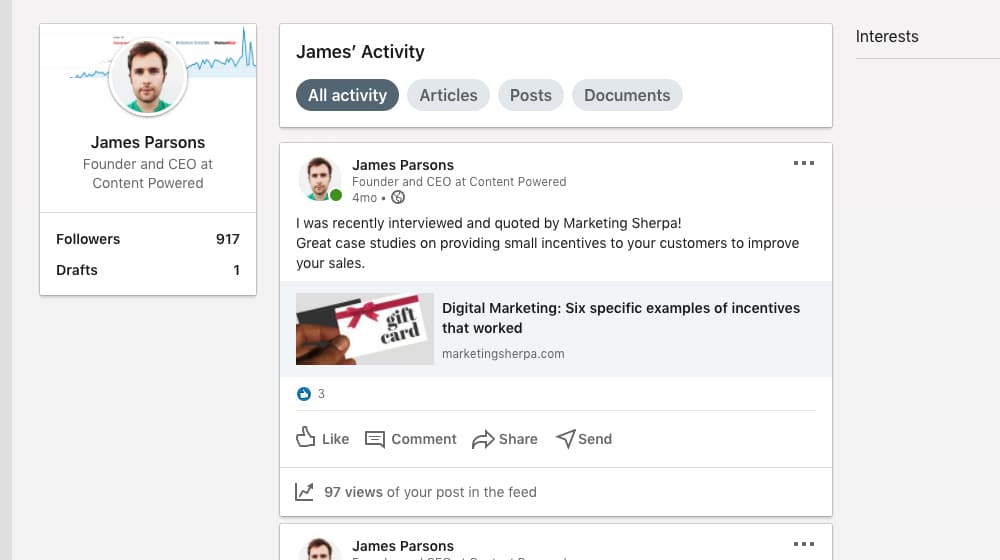
That's no different than how it works on Google, of course. It's just less direct. People can choose between domains and brands they like or don't like and can filter through those search results more easily. On LinkedIn, unless they have a particular reason to dislike a given brand or person, they'll be more likely to just absorb content as they see it, so there's less benefit for you to try to out-compete others on a topic that has already been well-covered.
Downside: LinkedIn has a sorting algorithm similar to Facebook.
LinkedIn's algorithms determine what content shows up in front of which people when they browse their feeds. That's fine; with the press of content being published every day, it's basically necessary. On the other hand, that algorithm means you're struggling against downward pressure with every step you climb. It's not quite as oppressive as Facebook, but it has a far lower number of users to worry about.
Downside: LinkedIn's analytics are very basic.
Facebook has famously detailed analytics. Google harvests a ton of data they'll provide to you once you set up their analytics. LinkedIn? Not so much. In fact, LinkedIn's analytics are almost laughably useless. You get some very basic readings of where your clicks are coming from, as defined by attributes like "in the bay area" or "from people with the job title associate", but that's basically it. It's more for curiosity than for any real data value.
Why a Business Blog?
While there are some defined benefits to using LinkedIn as a blogging platform, there are also quite a few benefits to writing on your own blog on your own domain.
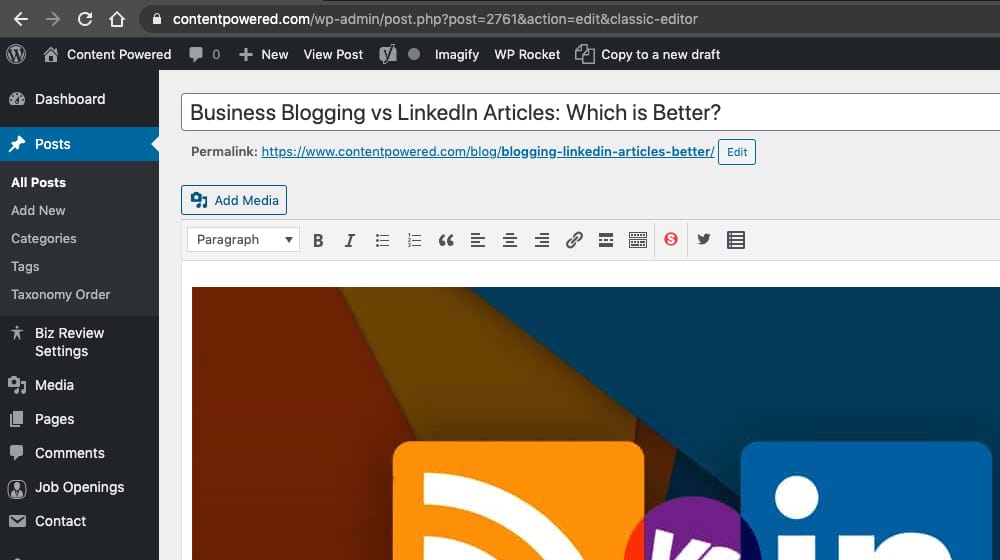
Let's talk about those now.
You have full control over the appearance, layout, and style of the content.
On LinkedIn, you're limited to a Medium-style clean blog surrounded by all of the usual LinkedIn branding. You are very limited in the features of the content management system - there's no custom plugins, advanced analytics, or custom features of any kind. You can add some images that have your logo on them, and people see your byline and know you wrote it, but there's nothing else that makes it stand out from every other piece of content on LinkedIn. With your own blog, you can customize your website's design and colors to fit your exact specifications, include your branding, add custom call to actions, and tweak every little detail of the layout to suit exactly what you want out of it. You have complete control.
You reap all of the benefits of your content's SEO.
LinkedIn content shows up well in Google search results because LinkedIn is a huge domain with tons of content and links pointing to it. Unfortunately, it gets most of that from the content people publish on it. If someone wants to link to your LinkedIn blog post, they give LinkedIn the link juice, not your site. Your business site doesn't gain any search relevant, influence, or links from anything you publish on LinkedIn. You can link to your site, sure, but those links are set to rel="nofollow", otherwise, it would be easy to abuse.
When you publish content on your own site, every bit of SEO you get from it is yours to keep. All the links that point to that post are backlinks for your site. All the traffic is traffic to your site, through your analytics, and to your CTAs. It's a ton of value you would otherwise basically just be giving to Microsoft.
You can drive readers to your products and landing pages with call-to-actions.
Take a quick look at a typical blog post on a business domain. It'll have all kinds of calls to action, from newsletter opt-ins to eBook downloads and live chat prompts. A reader can click on category tags or navigation bar links to explore the site. They can click on social sharing buttons. They can click on that pop-over lightbox, or that slide-in box, or that hello bar. All of these are lost to you on LinkedIn. All you get is some LinkedIn-specific calls to action, that like, comment, and share the post on LinkedIn itself.
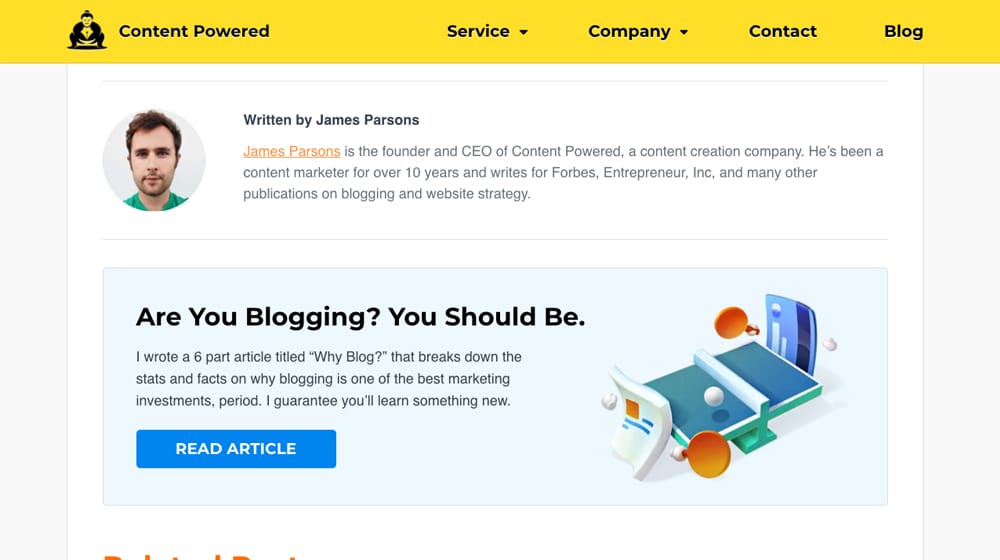
In order to get a LinkedIn reader to your store page to buy something, you need to either get them interested in your main website enough to click through to it, put a call to action somewhere in the post that doesn't stand out and isn't ignored, or link to your site for other reasons, typically as other blog posts. It's another added step, and it's going to have a low conversion rate no matter what you do.
You get a ton of analytics data just by running Google Analytics.
Words can almost not describe just how much better something like Google Analytics is than the basic LinkedIn analytics you get on your blog posts. If I had to compare the two, it's the difference between one person trying to build a treehouse with a rock and some sticks, and another person taking advantage of an entire lumberyard and a fully stocked workshop (not to mention all of the other tools you can get to harvest data, optimize your site, and generally run a real marketing campaign). Google has spent millions of dollars building one the best analytics suite in the world for marketers and bloggers, and best of all, they made it free to use. You get very few of those analytics and insights on your LinkedIn articles.
Downside: It can take a while to build up even a tiny audience on a business blog.
For real, it takes a long time to build up a business blog. Even if you already have an established audience and a business website, adding a blog to it isn't going to be some kind of immediate, night-and-day style explosion in growth. That only happens if you have other wildly successful properties you can leverage to promote yourself, really.

A business blog is never worthless. Every post you publish is another chance for people to find your content, share it on social media, and click your CTAs. Not to mention that every post gives your website more association with more keywords and more content on the web. It's all very useful stuff.
Downside: You have maintenance associated with running a blog.
One of the biggest benefits of LinkedIn is that it's convenient. You don't need to do anything to publish a post beyond "have a LinkedIn account" and "click the button to write a post." Meanwhile, for a business blog on your own domain, you need to set up a blogging platform and all of the themes and plugins that go along with it. You need to keep on top of all of those. You need to audit, monitor, and address blog comment and trackback spam, and routinely check that your plugins are up-to-date (and hope that updating those plugins doesn't break your site in some way). There is a lot of work that is required on an on-going basis, and if you're just getting into blogging and internet marketing, there is going to be a bit of a learning curve. It can honestly feel overwhelming, which is why so many people hire writers and blog managers to do it for them.
Are you ready to make a decision between LinkedIn and a business blog? If so, hold off for a moment; I have one more thing to tell you.
The Real Solution
As my regular readers should know, in a lot of situations like this, I'll tell you the real choice between them isn't a choice between them at all. It's actually simple: just use both of them. Indeed, I recommend using both a business blog and LinkedIn blogging, to get the best of both worlds.
There are, however, three different ways you can go about using both platforms.
Option 1: Pure syndication. With this option, you post a piece of content on your website and wait a few days for it to get picked up in Google's index. Once it's indexed, you publish it as-is on LinkedIn (and any other platforms you want to syndicate it on, like Medium). Typically, you add a "this post is originally from X" with a link to your original post, just to make sure the attribution is clear.
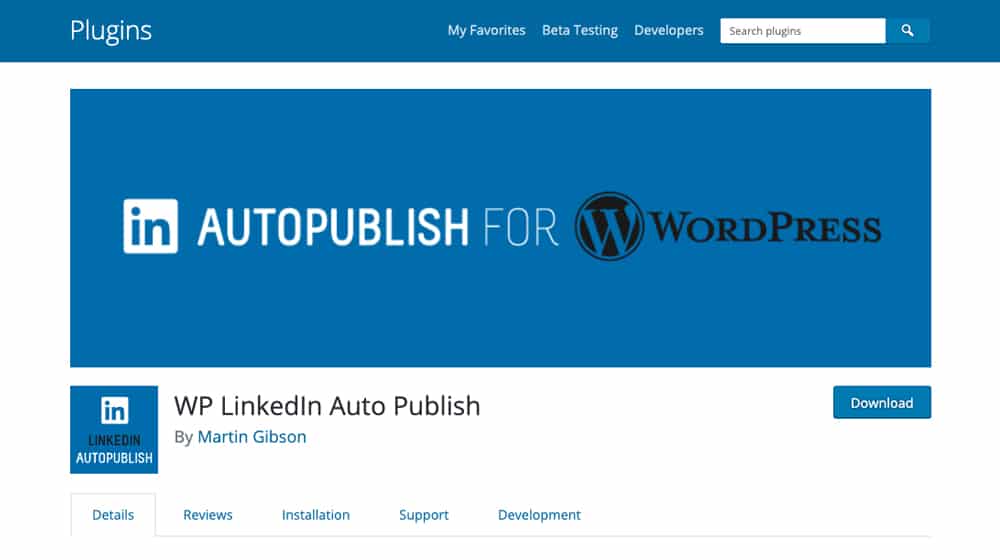
Some people don't like doing this because they're afraid that Google will penalize them for duplicate content. While that's a valid fear in some circumstances, I've never heard of it happening with this method. You're not trying to copy or steal content, you're not trying to post the same post two or more times on your domain to try to get more links, you're just sharing the post with a broader audience. It's no different than how an article on USA Today shows up on a bunch of other news sites.
Option 2: Tweaked syndication. This second option is similar to the first. You post the post on your domain and wait for Google to pick it up. Then you post it on LinkedIn (and other platforms) with a few tweaks. Some people like to change up the title and the first paragraph or two, to make sure there's enough difference to attract people who didn't want the original one in Google search. Other people like to rewrite the whole thing, basically doing a low-level spin of the content.
Personally, I don't think this is super effective. Changing the title is fine. Changing the first paragraph is okay. Doing more than that just means you might as well be writing a unique piece of content for LinkedIn, since if it's not unique enough, then you can get caught up in too-close copying and other issues. Google won't take offense at clear syndication, but they might not like article spinning.
Option 3: Original content. The third option is, of course, to use both as unique blogs. You can use your business blog to cover industry-related and product-related topics and then use a LinkedIn blog to write articles from your personal perspective. This allows you to cover things that you wouldn't normally be able to cover on your business blog. It requires the most work out of the three options, but it also has the most potential value.
At the end of the day, you're free to make the decision that appeals most to you. Using both platforms will be more work and will be more time consuming, but has the potential to bring in a lot of benefits. On the other hand, choosing one or the other limits you, but lets you spend your time and energy on other channels to boost your business instead.
I highly recommend testing out LinkedIn blogging as long as you're using LinkedIn for other reasons. It's not that difficult to syndicate some content for a few months and see what kind of return on your investment you get. If it turns out good, then great! If it doesn't get you much of anything, it costs you nothing to shut it down. After all, experiments and data-based decisions are the core of any business optimization, and this one is no different.
Your Turn
Now I turn to you - have you used LinkedIn blogging for your business? If so, did you do it in place of a blog on your own domain, or in addition to it? How did it work out for you?
Tell me your story in the comments, I'd love to hear it!



 30 Second Summary
30 Second Summary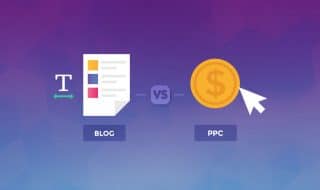



August 15, 2020
I am actually not a writer but I once used LinkedIn to post a blog I wrote personally. I put a call to action so those who are interested in my business can book a schedule for a free consultation. It's actually quite useful for me as I don't need to manage a different site for my blog but reading this, I am thinking of having one.. maybe when my business grows. Thanks for the post!
August 17, 2020
Hey Carmen! It's well worth it, you have a lot more control and those posts benefit your site instead of LinkedIn's. LinkedIn is a good first step for people who are new to blogging - plus, you can always re-post your blog posts from your site to LinkedIn and have the best of both worlds. Reach out if you ever need help with your blog!
August 23, 2020
Hey James! I am starting an e-commerce business and would like to ask if its better for me to use LinkedIn first or invest directly in a personal blog? I don’t have much time and not a writer so either way, I would need a help from a professional writer.
August 24, 2020
Hi Ernest! Blog posts are one of the most common things to outsource since most other business owners don't have the time to do it themselves either. I think posting to a personal blog and then re-blogging that content to LinkedIn is the best way to go - you get the best of both worlds and the original exists on your site. LinkedIn doesn't support the
rel="canonical"tag, which is the biggest caveat, but search engines are generally smart enough to figure out who the original poster of the content is. Just give it a few days in-between posting it so that Google finds your blog post first and indexes it before you re-post it to LinkedIn.October 30, 2020
Good stuff here. I read another recommendation that the best way is to link back to your original article to avoid duplicate content, is this true?
November 01, 2020
Hi Wally!
It couldn't hurt - what I like to do is wait at least a week for Google to index your blog post, and after it's indexed, then post it to LinkedIn.
I think only posting 1/3rd or 1/2 of your article on LinkedIn and closing the article with "Continue reading here:" with a link back to the original post is the best way to go.
This directs more traffic to your website, and it avoids the possibility of duplicate content issues.
January 29, 2021
Good thoughts here -- thanks for sharing.
January 29, 2021
Hey Simon! Appreciate it, glad it helped you!
February 24, 2021
Currently using LinkedIn but reading this makes me think of putting up my own site. Do you have a ballpark figure on how much will I spend creating one?
February 26, 2021
Hey Maxwell!
Building a site could cost anywhere from $0 to millions of dollars.
I know that’s not very useful info, but the range is giant – there are free site builders, freelancers, employees, agencies, and so on.
It depends on the type of website you need to be built, the functionality, and the talent of the team (or individual) that you need to hire.
I would build your site upon WordPress unless it’s eCommerce, in which case I would recommend Shopify. Lots of good articles on this site about both when you’re starting to grow your site.
Hope this helps you in some capacity!
May 28, 2021
Or, you could just post them to your blog then share them on your LinkedIn profile after...
May 28, 2021
Now you're thinking!
March 07, 2022
Hi, can I first post an article on LinkedIn and then post it on my blog? If this is advisable, does one post on the blog with a canonical url back to the LinkedIn post?
March 09, 2022
Hi Yael!
I recommend doing the opposite - post the full article on your blog first, and after it's indexed on Google, post it on your LinkedIn.
You may want to consider only posting a third of your article on LinkedIn, with a link at the bottom to the full post to keep reading.
This encourages people to click through to your website, where you have a lot more control.
I hope this helps!